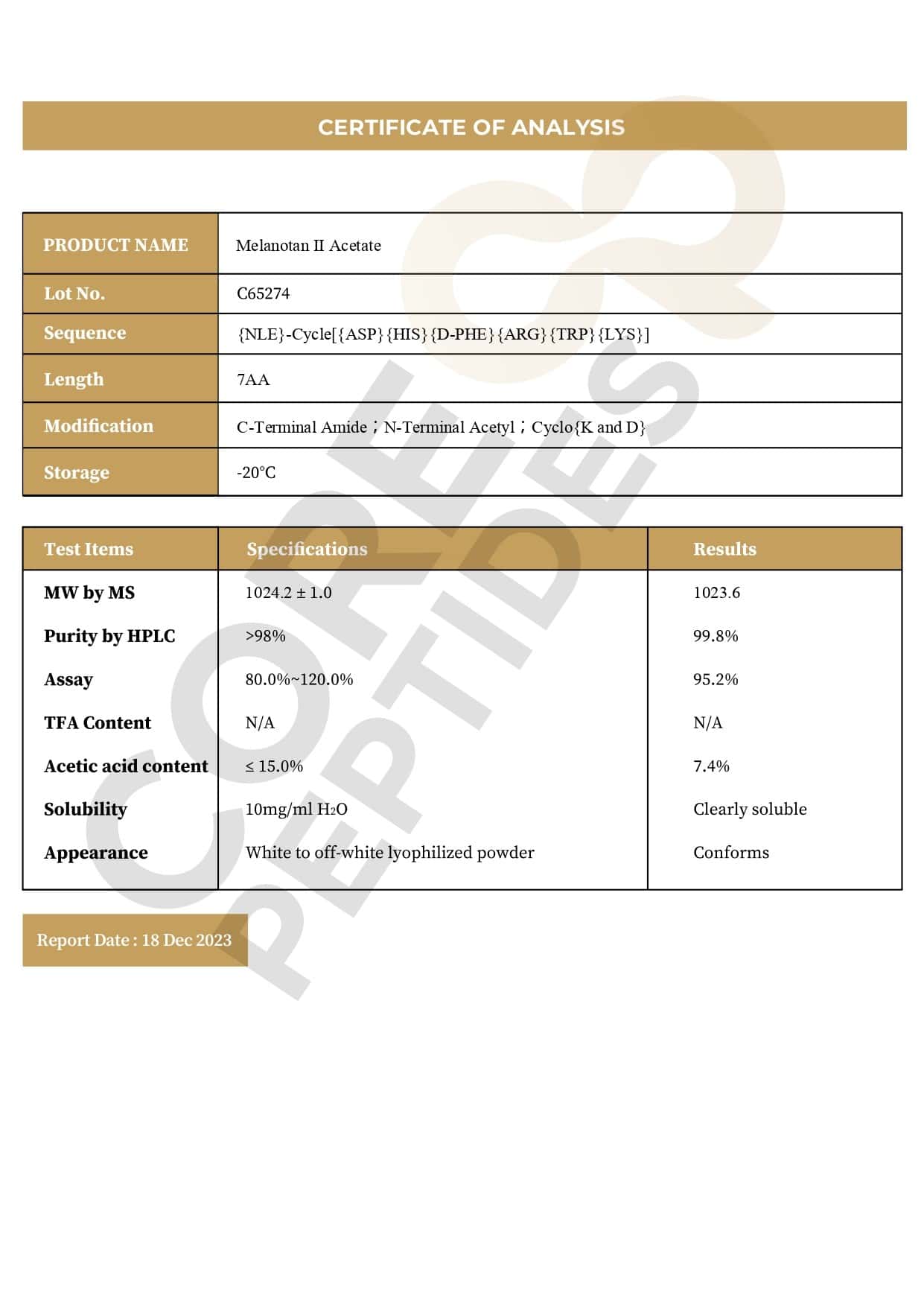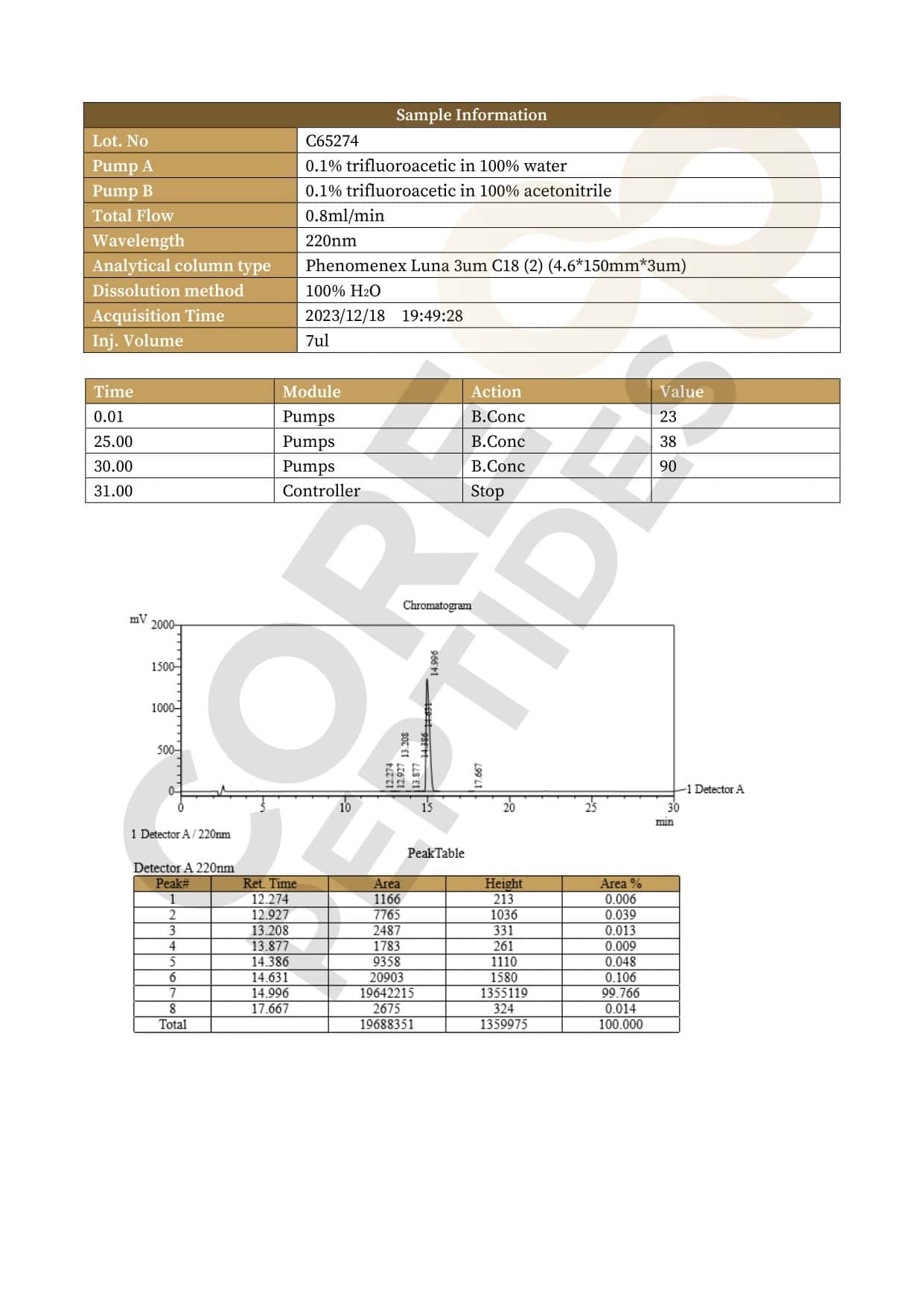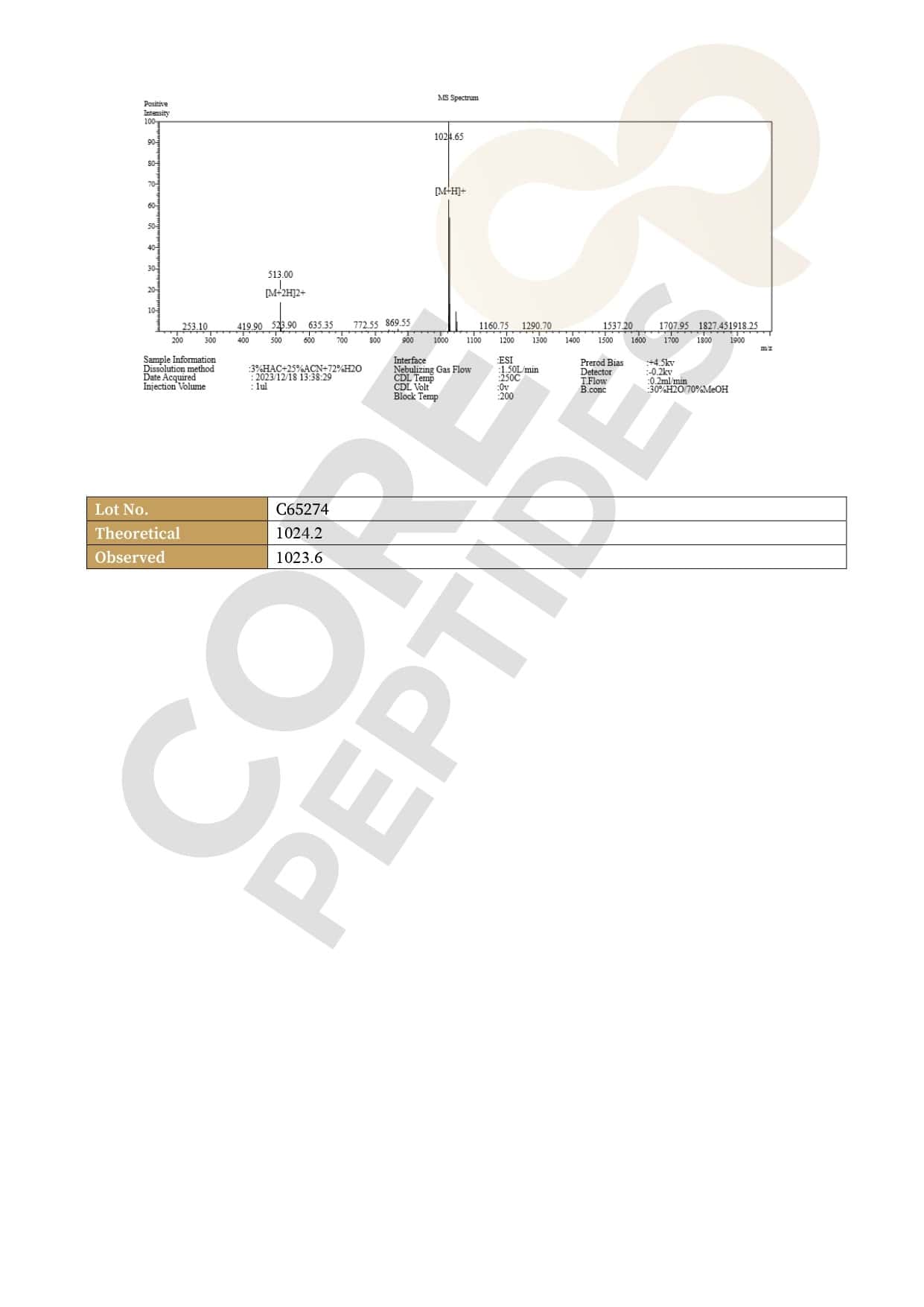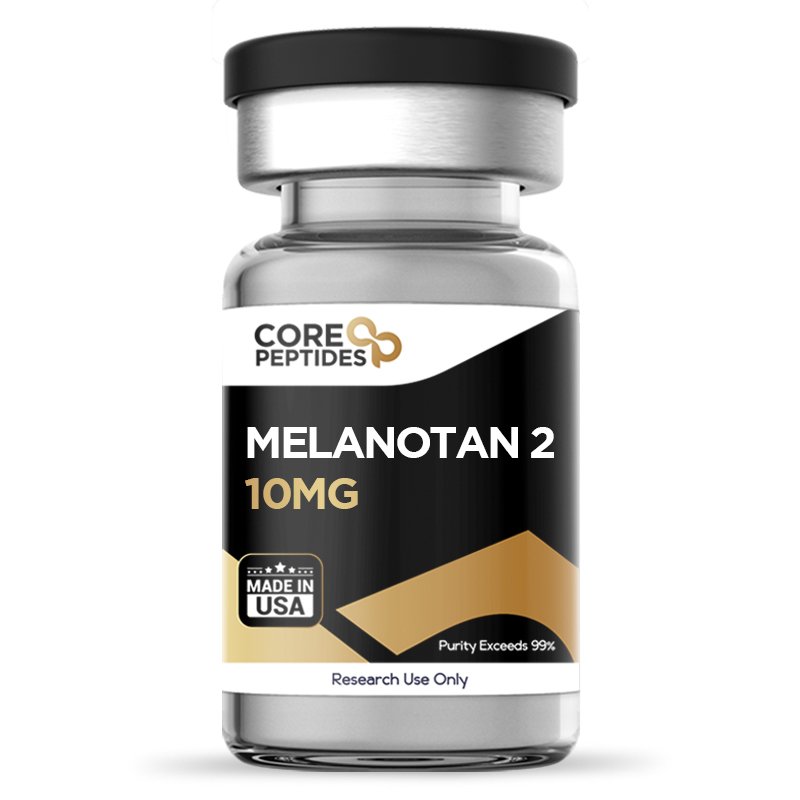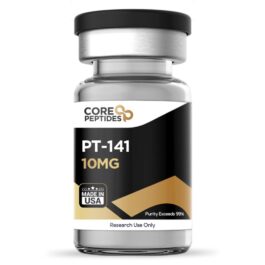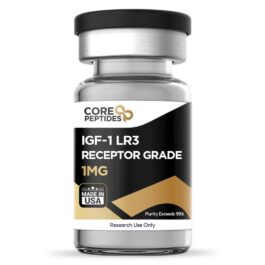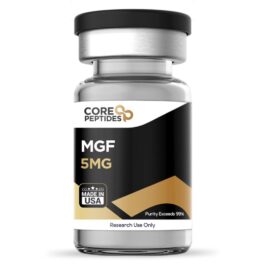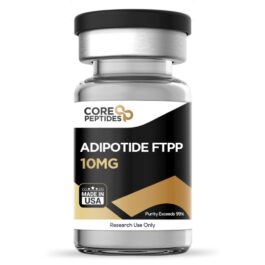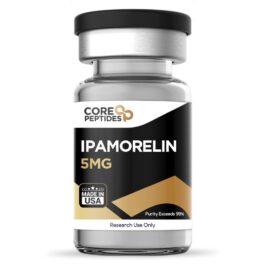Melanotan 2 (10mg)
$41.00
Size: 10mg
Contents: Melanotan 2 (10mg)
Form: Lyophilized powder
Purity: >99%
SKU: P-MELANTN2-10
FREE Shipping on $200+ orders
Discount per Quantity
| Quantity | Discount | Price |
|---|---|---|
| 5 - 8 | 5% | $38.95 |
| 9 + | 10% | $36.90 |
Melanotan 2 Peptide
Melanotan 2 peptide is a synthetic compound, which is an analog of the α-melanocyte-stimulating hormone.(1) The peptide is a cyclic heptapeptide that appears to have a modified affinity towards the receptors that the endogenous hormone may interact with. In addition to possibly stimulating melanogenesis (the production of melanin pigment) in dermal cells, this peptide may have increased affinity towards other receptors that play a role in the regulation of appetite and various types of arousal.(2)
Overview
Melanotan 2 likely serves as a non-selective agonist with the potential to bind with four out of the five different subtypes of melanocortin receptors (MC-R).(3) Depending on the localization, the receptor-Melanotan 2 bond may induce different actions. Namely, the four receptors that Melanotan 2 may interact with include:
- The melanocortin 1 receptor (MC1R) may be expressed in melanocytes, which are cells found in tissues such as dermal tissues, hair, and possibly cells and tissues found in the eye.
- The melanocortin 3 receptor (MC3R) might be found in a range of tissues, potentially including the brain and the placenta. Initial observations suggest that MC3R might be involved in modulating appetite under certain experimental conditions.
- The melanocortin 4 receptor (MC4R) may be localized within the central nervous system, perhaps in the hypothalamus. Some early indications suggest that this receptor may impact neurons that are believed to have some influence over mating behaviors and general arousal.
- The melanocortin 5 receptor (MC5R) appears to be distributed across multiple tissues, although what role it might serve remains unclear.
For example, the potential interaction between Melanotan 2 and the MC1Rs may lead to increased production of eumelanin, which causes darkening of the epidermal layer’s pigment.(4)
On the other hand, when Melanotan 2 binds with the MC4R, it may induce supraspinal centers in the brain, which may lead to increased libido. These signals may then be carried to the sympathetic and parasympathetic centers in the spinal cord and thoracolumbar region.(3)
Chemical Makeup
Other Known Titles: MT-II
Molecular Weight: 1024.19 g/mol
Molecular Formula: C50H69N15O9
Research and Clinical Studies
Melanotan 2 Peptide and Nerve Cell Regeneration
Research(5) in a murine model of an induced peripheral nerve injury has been employed to investigate the neurotrophic potential of Melanotan 2. 48 hours after half of the murine models were presented with the peptide, it was noted that the Melanotan 2 research models appeared to indicate a recovery in their sensory function. Furthermore, when the murine models were presented with a chemotherapeutic compound, Melanotan 2 appeared to exhibit neuroprotective properties, which protected the nerves from the compound's induced neurotoxicity to a certain extent. This potential is posited to be mediated via the MC4 receptors, which might even promote neurite outgrowth and possibly support the intrinsic capacity of neuronal tissue to recover after injury.
Although the exact signaling pathways are not fully understood, it is often suggested that the pro-opiomelanocortin (POMC)-derived melanocortin peptides, including compounds analogous to a-melanocyte-stimulating hormone (a-MSH), may influence neuronal structures by increasing the number and length of neurites and potentially promoting nerve sprouting in damaged regions. Since Melanotan 2 is considered a potent melanocortin receptor agonist, it may trigger a cascade of intracellular events that theoretically lead to a better-supported ability of nerve fibers to regenerate after various forms of insult, as well as a partial protective response against toxic neuropathic conditions. Therefore, the researchers concluded that they “observed that Melanotan-II also possesses neuroprotective properties, as it partially protected the nerve from a toxic neuropathy induced by cisplatin.”
Melanotan 2 Peptide and Arousal Neurosignaling
In a clinical study,(6) Melanotan 2 has been suggested to induce increased arousal neuron signaling in more than 80% of cases, compared to only 20% success with a placebo. This research peptide may act via the MC4 receptors and downstream of established neuromodulators, including dopaminergic and oxytocinergic signals, possibly integrating their actions within discrete hypothalamic centers. These regions are thought to coordinate various homeostatic and motivational behaviors, and the introduction of an agonist like Melanotan 2 may potentially reframe the balance of neuronal activity. These researchers also posit that the involvement of MC5 receptors in certain peripheral glands may potentially provide a parallel route that links central neuro signaling with peripheral modulatory factors. However, this remains an area where mechanisms are only hypothesized.
Melanotan 2 Peptide and Neurodevelopmental Modulation
Researchers have said that Melanotan 2 may potentially influence aberrant neural mechanisms by possibly stimulating populations of neurons that may govern social cognition through endogenous oxytocinergic signaling.(7) These MC4R-sensitive circuits, potentially located in regions such as the paraventricular nucleus of the hypothalamus, might release endogenous oxytocin in response to Melanotan 2, possibly recalibrating imbalanced neurochemical activity thought to underlie key aspects of social impairment. This oxytocin release may, in turn, modulate neurotransmission involving serotonin, glutamate, dopamine, and GABA, all of which are implicated in shaping social adaptation.
By engaging these systems, Melanotan 2 may alter the functional connectivity of cortical and subcortical networks—regions including, for instance, the anterior cingulate cortex—where oxytocin receptor distribution may differ in atypical neurodevelopmental contexts. In doing so, researchers have been able to hypothesize that Melanotan 2 might restore or modify synaptic communication and synaptic plasticity, which may go so far as to reshape the underlying neuroarchitecture.
Melanotan 2 Peptide and Models of Sunless Tanning
Melanotan 2 may increase melanin production and thereby induce darker pigmentation without the need for ultraviolet irradiation by engaging the MC1R on melanocytes.(8) Moreover, the peptide's cyclic structure supports a more prolonged metabotropic activity compared to other MSH analogs.
Although the precise intracellular signaling cascades remain incompletely understood, current data suggest that receptor interactions might lead to the elevated synthesis of eumelanin. This might offer a potential pathway for the development of sunless tanning models in a controlled research environment. Specifically, researchers have made comments about their observation of outcomes in research models, such as “increased [darkened] pigmentation in the face, upper body, and buttock” in experimental settings.
Melanotan 2 peptide is available for research and laboratory purposes only. Please review and adhere to our Terms and Conditions before ordering.
References:
- Ryakhovsky, Vladimir V et al. “The first preparative solution phase synthesis of Melanotan II.” Beilstein Journal of Organic Chemistry vol. 4 (2008): 39. doi:10.3762/bjoc.4.39. https://pubmed.ncbi.nlm.nih.gov/19043625/
- Mac E. Hadley, Discovery that a melanocortin regulates sexual functions in male and female humans, Peptides, Volume 26, Issue 10, 2005, Pages 1687-1689, ISSN 0196-9781, https://doi.org/10.1016/j.peptides.2005.01.023
- King, Stephen H et al. “Melanocortin receptors, melanotropic peptides and penile erection.” Current topics in medicinal chemistry vol. 7,11 (2007): 1098-1106. https://www.ncbi.nlm.nih.gov/pmc/articles/PMC2694735/
- Peters, Björn, et al. “Melanotan II: a possible cause of renal infarction: review of the literature and case report.” CEN case reports vol. 9,2 (2020): 159-161. doi:10.1007/s13730-020-00447-z. https://www.ncbi.nlm.nih.gov/pmc/articles/PMC7148395/
- Ter Laak, Mariël P, et al. “The potent melanocortin receptor agonist melanotan-II promotes peripheral nerve regeneration and has neuroprotective properties in the rat.” European Journal of Pharmacology vol. 462,1-3 (2003): 179-83. doi:10.1016/s0014-2999(02)02945-x. https://pubmed.ncbi.nlm.nih.gov/12591111/
- Wessells, H et al. “Melanocortin receptor agonists, penile erection, and sexual motivation: human studies with Melanotan II.” International journal of impotence research vol. 12 Suppl 4 (2000): S74-9. doi:10.1038/sj.ijir.3900582. https://pubmed.ncbi.nlm.nih.gov/11035391/
- Minakova E, Lang J, Medel-Matus JS, Gould GG, Reynolds A, Shin D, Mazarati A, Sankar R. Melanotan-II reverses autistic features in a maternal immune activation mouse model of autism. PLoS One. 2019 Jan 10;14(1):e0210389. Doi: 10.1371/journal.pone.0210389. PMID: 30629642; PMCID: PMC6328175.
- Dorr RT, Lines R, Levine N, Brooks C, Xiang L, Hruby VJ, Hadley ME. Evaluation of melanotan-II, a superpotent cyclic melanotropic peptide in a pilot phase-I clinical study. Life Sci. 1996;58(20):1777-84. doi: 10.1016/0024-3205(96)00160-9. PMID: 8637402.
